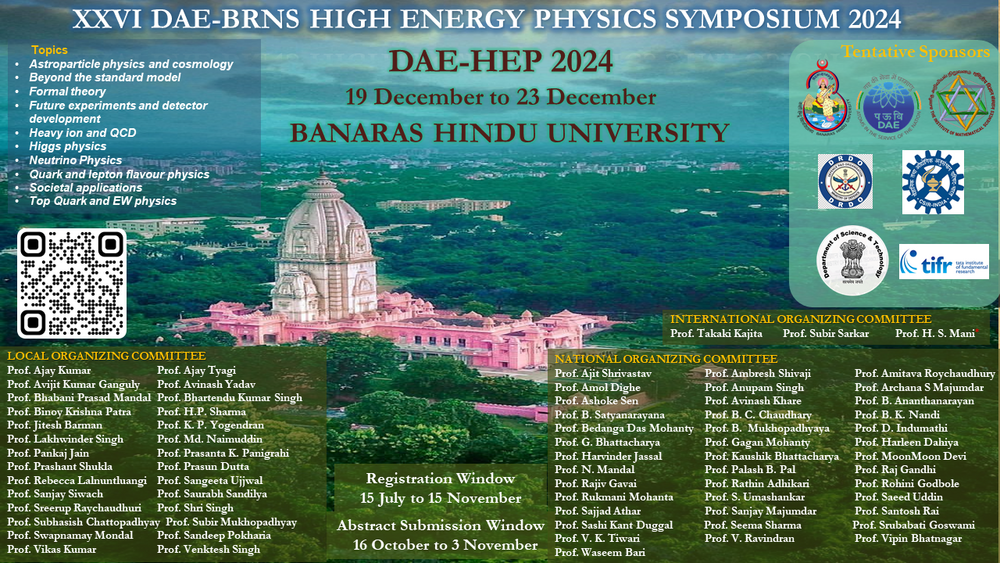Speaker
Description
It is a common lore that in the thermal leptogenesis in the type-1 seesaw scenario with the conventional hierarchy of the heavy right-handed neutrinos (RHNs), that the CP violating, out of equilibrium decay of the lightest RHN ($N_1$) is the only relevant source of $B-L$ asymmetry. Any asymmetry produced by the heavier RHNs get washed out by the lepton number violating processes mediated by $N_1$. In this paper, we examine this assumption comprehensively, considering decay and inverse decay processes as well as the inclusion of scatterings. We find that in order to satisfy the neutrino masses and mixing given by the low energy neutrino oscillation data, not more than one heavy RHN can be in a weak washout regime ($\Gamma_D(z=\infty)/H(z=1)\ll1,$ where $\Gamma_D$ is the decay rate of heavy RHNs, $H$ is the Hubble parameter and $z=M_1/T$ with $M_1$ being the mass of $N_1$ and $T$ being the temperature of the thermal bath). This implies that if $N_2$ or $N_3$ is in weak washout regime, then $N_1$ will have to be in strong washout ($\Gamma_D(z=\infty)/H(z=1)\gg1$), and thereby washing out any pre-existing asymmetry. So in this case the thermal leptogenesis doesn't rely on any initial memory. On the other hand, if $N_2$ and $N_3$ are in strong washout regime, then there is a possibility that $N_1$ can be in weak washout. As a result, the final $B-L$ asymmetry will have a strong dependency on the initial memory. A detailed analysis will be presented by taking different benchmark points.
| Field of contribution | Phenomenology |
|---|

